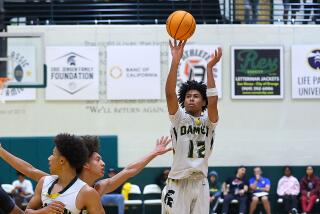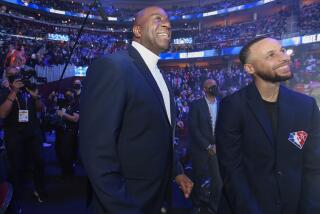How the NBA learned to love the three-pointer
The NBA adopted the three-point shot on a trial basis for the 1979-80 season and wound up keeping it, although it wasn’t until almost a decade later that teams really began to embrace it as a weapon.
ESPN analyst Tim Legler, among the most accurate three-point shooters in NBA history, said he really noticed how things had changed in the NBA after watching a replay of Game 6 of the 1987 Finals between the Lakers and Celtics. Even with great shooters such as Larry Bird, Magic Johnson, Danny Ainge, Byron Scott and Michael Cooper on the floor, the teams were a combined 0 for 12 in three-point attempts in that game.
It wasn’t the poor shooting that threw him, but the scant number of attempts. There are teams these days that might take 35 threes in a game.
“That spoke volumes to me about how the game has changed in the NBA,” Legler said. “Fast-forward to 2008, you’re talking 21 years later, and now on an average night teams are all shooting more than 20. There are teams that have taken up to 40 in a game this year.
“You’re talking about two great teams – and teams that had great shooters – and the game was played differently. The object was different. What you were trying to accomplish was different. Now, so much of what you’re trying to do in the NBA is predicated around the three-point shot.”
Steve Kerr, who made an NBA-record 45.4% of his three-point shots over the course of his career, said the shot becomes such second nature that a good long-range shooter should be able to make 80% of his attempts in warmups, assuming there’s no pressure or a hand in his face.
“Guys can make 25 in a row,” said Kerr, an analyst for TNT who will be calling Sunday’s All-Star game. “I’ve seen guys do that. I’ve done it in practice. But you get in a game with defense, pressure, fatigue, and you’re not taking consecutive shots. You’re taking one every six minutes or whatever, then it becomes tougher.”
Conner Henry, who was a first-year player for those Celtics and was known for his ability to knock down three-pointers, said the excellence of his teammates afforded him plenty of open shots.
“It was quite easy for me because we played so much inside basketball,” he said. “You’d just dump it in to Bird, [Kevin] McHale, or [Robert] Parrish, and the ball would get swung around, and defenders would often come off me because I was a rookie. So [coach K.C. Jones] gave me the green light. So if my feet were set, I could shoot.”
Henry, now an assistant coach for the L.A. D-Fenders of the NBA Development League, played in an era where there weren’t three-pointers in high school or college ball (he played at UC Santa Barbara), so adjusting to the line itself was a challenge.
“Growing up, there was never a line,” he said. “You just shot from distance and you got up shots, and when you got really good at distance you’d increase your range.
“But in the NBA, that line was deep. There was something about actually having a line at your feet that you had to make sure you were behind. I struggled in the beginning. It wasn’t easy in practice. You had to get up a lot of reps to get comfortable with it.”
ALSO:
The three-pointer: A long shot comes in with a big payoff for NBA
Kenneth Faried shines in Rising Stars game
NBA comes between Lakers stars Kobe Bryant and Dwight Howard
More to Read
Go beyond the scoreboard
Get the latest on L.A.'s teams in the daily Sports Report newsletter.
You may occasionally receive promotional content from the Los Angeles Times.











